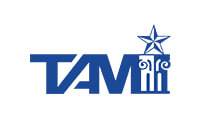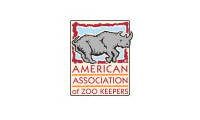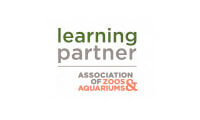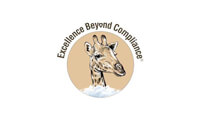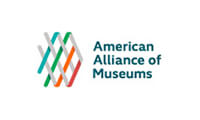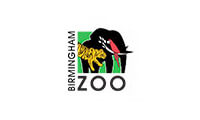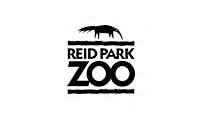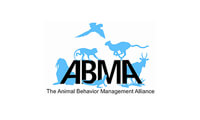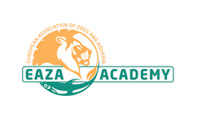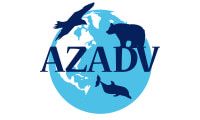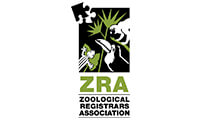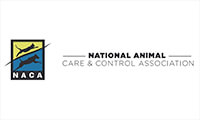Getting Better All the Time
Animal Welfare Act Enforcement Should Have Your Attention—NOW!
By James F. Gesualdi
Enforcement—the act of compelling observance of or compliance with a law, rule, or obligation.
—Oxford Languages
Compliance isn't about following rules. It's about doing the right thing.
—Bob McDonald, Former CEO of Proctor & Gamble
Conscientious animal caregivers, zoological professionals, and responsible organizations want to do the right thing. That begins with complying with the Animal Welfare Act (AWA) as well as any applicable accreditation/certification and other professional standards. Those committed to giving their all for the animals they care for go even further by practicing Excellence Beyond Compliance® and “Getting Better All the Time.” When this is done consciously, conscientiously, and voluntarily, it is a choice.
Mere “compliance” is important—but it is required, and thus a starting point. Even those who lovingly undertake much more than is required may at times encounter difficulties and problematic situations. Although these dedicated professionals did not need a federal agency or inspector to abide by the requirements of the AWA, they did so—and more. Still, they experienced an outcome or result that might cause the agency to “enforce” compliance after the fact by citing and perhaps even sanctioning it. Resilient caregivers, professionals, and organizations use these moments to make things better for animals, addressing and resolving the underlying condition or situation and going deeper to examine other ways to improve.
Unfortunately, there are some operating under the AWA for whom enforcement involves compelling compliance again and again, including after the first incident, enforcement, citations, sanctions, and more intense scrutiny. Justifiable and long-standing concern for animals is behind the heightened focus on AWA enforcement. The actions of those motivated primarily by the hammer of stronger enforcement make it necessary.
Those who take great pride in their animal care, facilities, maintenance, security, training, veterinary care, and compliance records can still learn much from this new age of AWA enforcement. These insights need not only apply when something unfortunate occurs and after-the-fact enforcement may ensue. Three recent developments underscore the prioritization of enforcement: congressional passage and presidential execution of the “Consolidated Appropriations Act, 2024” H.R. 4366;
a Memorandum of Understanding (MOU) between the U.S. Department of Agriculture (USDA) and Department of Justice (DOJ) on civil judicial enforcement of the AWA;
and a February 2024 report on USDA enforcement in Fiscal Year 2023 (concentrating on commercial breeders, though making more generalized conclusions) by the American Society for the Prevention of Cruelty to Animals (ASPCA).
Consolidated Appropriations Act
This law, which funds the federal government—including USDA—through the end of the current fiscal year (September 30, 2024), contained provisions on voluntary USDA inspections of Department of Veteran Affairs (VA) research facilities with canines, felines, and nonhuman primates, as well as associated AWA compliance reporting. (The law goes much further in limiting and sunsetting such research, and also includes protections for the humane treatment of wild horses.) Significantly, in establishing the scientific necessity of any such VA research, the evaluations must include “ethical considerations requiring minimizing the harm experienced by canines, felines, and nonhuman primates.” (Section 3 247(b)(1)(D) at p. 78)
These USDA- and AWA-related portions of the Consolidated Appropriations Act, 2024, relate to 2023 House and Senate reports that expressed concerns about AWA enforcement. They urged greater agency enforcement action and greater information sharing, including with Congress.
Memorandum of Understanding Between the USDA and DOJ
These two executive departments issued joint press releases on March 8, announcing memorialization of their ongoing collaboration on AWA enforcement in the MOU. The DOJ press release is available here and the USDA press release is available here.
Both press releases state:
“The MOU represents another significant step forward in AWA enforcement, as it outlines new actions the agencies will take to enhance their collaboration. In general, the MOU establishes a framework for notification, consultation, and coordination among [the USDA’s Animal and Plant Health Inspection Service] APHIS, USDA’s General Counsel, and [the DOJ’s Environment and Natural Resources Division] ENRD. Building on the agencies’ ongoing relationship, this framework formalizes procedures for regular meetings, coordination on enforcement referrals, information sharing, and additional training for employees, among other activities. These procedures will better enable the agencies to prepare for and coordinate on potential civil enforcement actions.
USDA and the Justice Department take seriously their common goal of ensuring that animals protected by the AWA are cared for and treated humanely. This MOU demonstrates the agencies’ joint commitment to fulfilling this mission.”
The MOU itself, available here, contains the following sections: Purpose, Background and Responsibilities, Coordination and Cooperation, and Implementation. Some highlights to be aware of:
| II A. 1. | APHIS has a responsibility to notify the DOJ about AWA violations “placing the health of any animal in danger . . .” Referrals to the DOJ may be to enforce, prevent, and restrain violations. |
| III A. 1. a. | Joint agency meetings will be held at least quarterly. |
| III A. 1. b. | APHIS will provide notice to the DOJ regarding rulemaking, civil lawsuits concerning the AWA, and “[s]ubstantive changes to the Animal Care Inspection Guide” (which demonstrates the importance of that invaluable reference document everyone should be familiar with and use). |
| III A. 2. b. | There will be collaborative communication (i.e., joint enforcement talking points), consultation, and information sharing (e.g., correspondence, complaints, and outside stakeholder communications that may relate to or result in litigation or enforcement issues) and opportunity to provide input on responding. |
| III A. 3. | Resources will be focused “on the matters that are most likely to make a positive impact on the welfare of animals and otherwise further the purposes of the AWA.” They will “prioritize their attention on those facilities or activities that are considered the most egregious potential violators” based on certain criteria, including denial of access, refusal or interference with inspections, confiscation, and “four or more inspection reports within the past 18 months containing serious noncompliant items, including direct and/or critical noncompliant items” and “other instances where a licensee is engaging in neglect . . .” These criteria are simply a guide. |
| III A. 5. (p. 1) | Interestingly, the MOU commits to communication regarding things like license “renewals,” though all licensees now require new licenses each time their license expires. |
ASPCA Report on USDA Enforcement
This report is based upon a review of inspection report records in the agency’s Public Search Tool as well as lists of regulated entities and enforcement action information (including license suspensions and revocations, fines, and animal confiscations). In short, the report states that there are many more regulated entities than there are inspections, there are significant numbers of “violations” reported, and there are very few enforcement actions. Some commercial breeder situations were also summarized and discussed. (Note that total number of “violations” for the period studied was reported, but there was no distinction between those items involving serious animal welfare impacts, such as direct and critical noncompliances, and other items.) The report also notes that “violations” are underreported due to various practices such as “courtesy visits,” which the report states do not help promote compliance (though this author’s experience with accredited/certified zoological organizations suggests otherwise).
Although one can respectfully disagree with some points, the report is not off the mark in using publicly available information to demonstrate enforcement issues and the need for greater resources as well as stronger enforcement. For “good” facilities and organizations with any items on your inspection reports, this should be a wake-up call as to how that citation or citations can be viewed and used to include you (perhaps inaccurately) as part of the larger enforcement problem. Being proactive and transparent with corrective measures, improvement plans, and self-certified compliance reporting is the way to demonstrate your shared commitment to advancing animal interests, protection, and well-being.
Take Note and Keep Getting Better
Congressional commentary, funding and requirements, executive department collaboration, NGO analysis of AWA inspections, and enforcement are all evidence of the persistent drive toward better and greater enforcement of the AWA. This is a good thing to the extent that it helps animals, protects them, saves their lives, and holds people and organizations accountable. As noted in the USDA/DOJ MOU, enforcement decisions and actions should make the most of available resources by focusing on animals in greatest need and where more activities can produce the greatest benefit. Other situations warrant action as well, but the approach may be different and perhaps more flexible. “How we can best help this animal or these animals” should be the fundamental question in any inquiry.
This matters to everyone who cares for and works with animals. There is always something we can do to help, and to get better. Sometimes a difficult moment compels us to do so, but it should simply be what we do as a matter of course—every day.
Doing your best in this moment puts you in the best place for the next moment.
—Oprah Winfrey
© 2024 James F. Gesualdi, P.C. The opinions expressed herein are solely those of the author. This is not, nor should it be construed as, legal advice.



